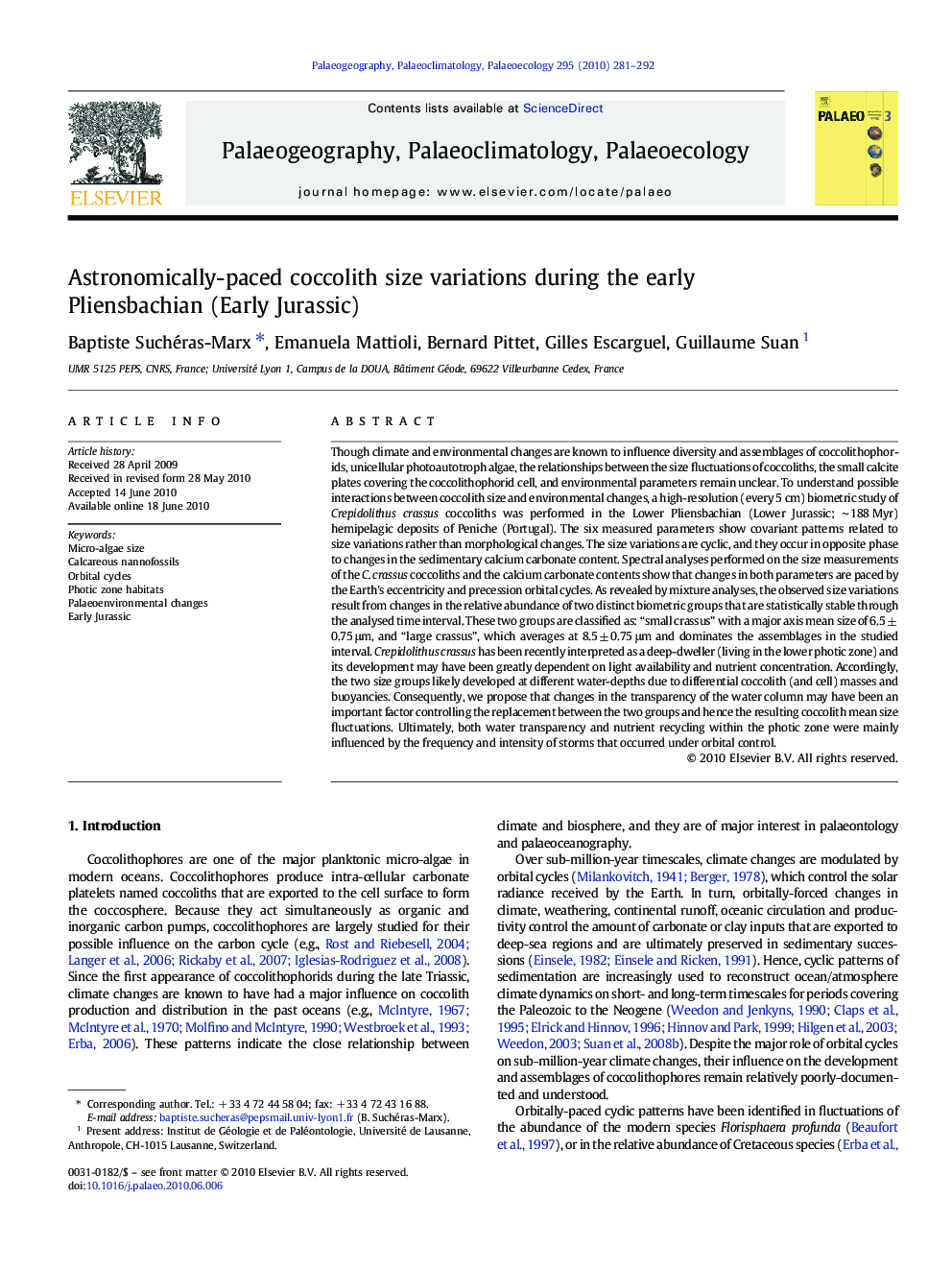| کد مقاله | کد نشریه | سال انتشار | مقاله انگلیسی | نسخه تمام متن |
|---|---|---|---|---|
| 4467642 | 1622272 | 2010 | 12 صفحه PDF | دانلود رایگان |

Though climate and environmental changes are known to influence diversity and assemblages of coccolithophorids, unicellular photoautotroph algae, the relationships between the size fluctuations of coccoliths, the small calcite plates covering the coccolithophorid cell, and environmental parameters remain unclear. To understand possible interactions between coccolith size and environmental changes, a high-resolution (every 5 cm) biometric study of Crepidolithus crassus coccoliths was performed in the Lower Pliensbachian (Lower Jurassic; ∼ 188 Myr) hemipelagic deposits of Peniche (Portugal). The six measured parameters show covariant patterns related to size variations rather than morphological changes. The size variations are cyclic, and they occur in opposite phase to changes in the sedimentary calcium carbonate content. Spectral analyses performed on the size measurements of the C. crassus coccoliths and the calcium carbonate contents show that changes in both parameters are paced by the Earth's eccentricity and precession orbital cycles. As revealed by mixture analyses, the observed size variations result from changes in the relative abundance of two distinct biometric groups that are statistically stable through the analysed time interval. These two groups are classified as: “small crassus” with a major axis mean size of 6.5 ± 0.75 μm, and “large crassus”, which averages at 8.5 ± 0.75 μm and dominates the assemblages in the studied interval. Crepidolithus crassus has been recently interpreted as a deep-dweller (living in the lower photic zone) and its development may have been greatly dependent on light availability and nutrient concentration. Accordingly, the two size groups likely developed at different water-depths due to differential coccolith (and cell) masses and buoyancies. Consequently, we propose that changes in the transparency of the water column may have been an important factor controlling the replacement between the two groups and hence the resulting coccolith mean size fluctuations. Ultimately, both water transparency and nutrient recycling within the photic zone were mainly influenced by the frequency and intensity of storms that occurred under orbital control.
Journal: Palaeogeography, Palaeoclimatology, Palaeoecology - Volume 295, Issues 1–2, 1 September 2010, Pages 281–292